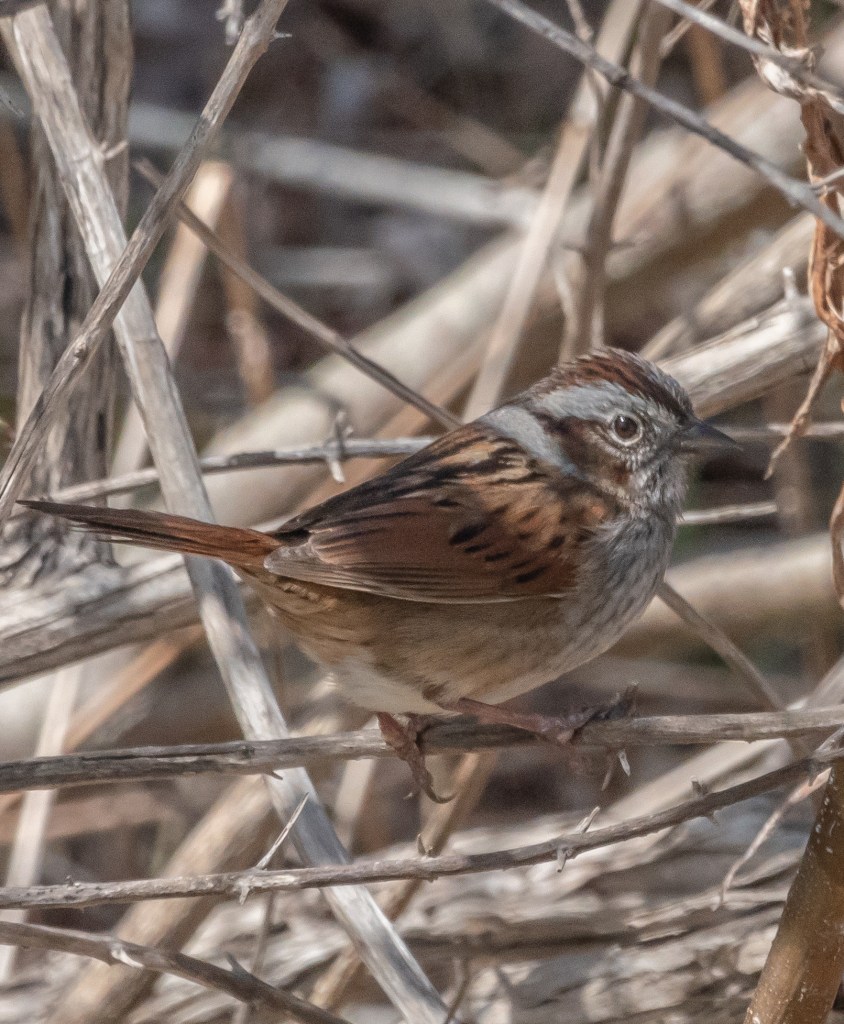Recently I commented that the swamp sparrow is one of the most difficult birds to photograph because of its elusive habits.The “birdwatching spirits” must have been listening because while out for a walk here:

I spotted a small bird darting into thick shrubbery. Happily, I was able to find it with my camera and it was a Swamp Sparrow.
Swamp Sparrows have a reddish crown and a white throat patch:



The thin striping on the gray breast indicated that this is a juvenile bird.
They also have rufous-coloured wings and tail:


That is one of the joys of birdwatching. You NEVER know what you will find next!
Other birds that I was able to photograph:





Nearby scenes:











Some botany:

















Bond Head
Bond Head was named in 1837 in honour of Sir Francis Bond Head, lieutenant- governor of Upper Canada 1836 – 1838. The community was the birthplace of two famous Canadians:











NATURE POETRY
Roses are red,
Violets are blue,
But they don’t get around
Like the dandelions do. – Slim Acres (1913-2009)
Miles Hearn

Sir Francis Bond Head (1793-1875) was an English soldier, a world traveller, and a prolific author. He was born in Kent, England on January 1st, 1793 and was educated at Rochester grammar school and the Royal Military Academy. In 1811 he was commissioned to the Royal Engineers and stationed in the Mediterranean, where he served in the campaign of 1815. He was present at the battle of Waterloo.
Many of us know that Bond Head was appointed Lieutenant-Governor of Upper Canada in 1835 in an attempt by the British government to appease the reformers in the colony, such as William Lyon Mackenzie, who wanted responsible government.
https://www.simcoe.com/news-story/2038753-bond-head-history-back-200-years/
Miles I continue to enjoy your amazing photographs. The swamp sparrow is such a beautiful little bird and one I’m sure I would not see out on my own. Thank you for taking us on all these educational walks this spring.